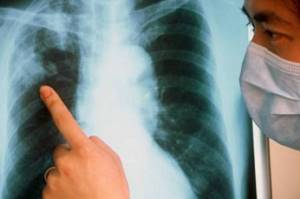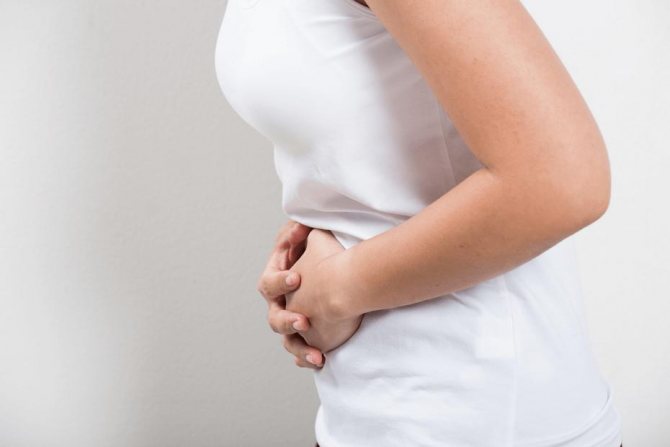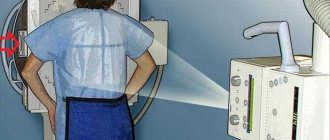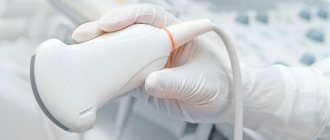In modern medicine, various diagnostic measures are used to identify any pathological process.
One of the most important techniques is fluorography. Thanks to this study, it is possible to identify abnormalities in the lungs and chest, which in the early stages of development can occur without the manifestation of clinical symptoms. The examination is carried out using X-rays, which have a small dose of radiation, which does not pose any threat to human health. However, there are certain restrictions for the procedure. The study is not prescribed for children under the age of majority, as well as for women who are breastfeeding. Fluorography is used with caution during pregnancy. During the menstrual cycle, in some cases the study is contraindicated. However, there are situations when menstruation is not a reason to refuse this diagnostic method.
Is it possible to do fluorography on menstrual days?
Before answering the question about the advisability of carrying out the procedure during menstruation, it is necessary to remember that the course of critical days completely depends on the influence of extraneous factors. Such processes include:
- hormone production;
- endometrial renewal;
- replacement of lost blood fluid;
- removal of follicles.

If a woman is worried that fluorography may be harmful to her health, then she should consult a gynecologist.
Reasons for rising temperature
An increase in temperature is most often due to the development of complications or serious pathological processes. If the temperature increases with a cyst, this may indicate:
- Significant increase in tumor size and pressure on nearby organs. This provokes problems with metabolism and the development of the inflammatory process.
- Apoplexy and penetration of the capsule contents into the abdominal cavity. Against the background of the rupture, an inflammatory process also develops.
- Infection of formation and suppuration.
- Twist the appendages or pedicles of the capsule.
An increase in temperature is accompanied by weakness, increased fever, and decreased performance. Often the temperature does not last all day, but rises only in the evening. If the indicators are greatly elevated and do not change for a long time, this indicates the development of a complication.
Torsion of the cyst pedicle
This complication occurs in approximately 7% of cases. Most often, torsion occurs in medium-sized formations, which can cause the organ to rotate relative to the ligaments located around it. In this case, the vessels located in that area are compressed and problems with blood flow arise.
Pathology develops in several stages:
- The blood vessels are pinched, which leads to pain in the area of the affected organ.
- Necrosis of ovarian tissue occurs.
- The woman's condition worsens, peritonitis may develop, blood pressure decreases, and heart rate increases.
As the complication progresses, chills appear and the skin becomes pale. Sweating increases, disruptions in the gastrointestinal tract are observed, nausea, vomiting or diarrhea occurs.
When torsion occurs, a woman needs emergency help, as it can cause severe internal bleeding, sepsis or peritonitis. With the development of such conditions, the temperature rises to 38 degrees or more and does not subside.
Suppuration
A dermoid cyst is characterized by bacterial changes that can lead to the development of suppuration. The infection can enter the outbreak both from the outside and through internal channels. Therefore, the following symptoms appear:
- Temperature rises to 38-39 degrees.
- Fever, fever, chills.
- Weakness, decreased performance.
- Feeling of intoxication.
- Severe pain in the abdominal area.
This condition is a medical emergency, so if symptoms appear, it is important to see a doctor as soon as possible.
Cyst rupture
A complication such as rupture of the cyst capsule is characterized by a significant increase in temperature. A rupture can be provoked by strong physical exertion and active sex. Most often, complication occurs in the presence of large formations.
When an ovarian cyst ruptures, the temperature is 37, but can reach 38 degrees. At the same time, the blood pressure level sharply decreases and the pulse drops. Bleeding from the vaginal area and severe pain may occur. The rupture can only be treated in a hospital setting, because in the absence of proper therapy, serious complications can arise.
After operation
After surgical removal of the formation, the temperature rises within two to three days. This reaction is normal for the body after surgery. As a rule, removal is performed by laparoscopy, which can significantly reduce recovery time.
If a few days after the intervention the temperature does not return to normal, this indicates the occurrence of complications in the form of inflammatory processes. In this case, the woman should receive medical help and remain under the supervision of a specialist.

How periods affect your results
To undergo a fluorographic examination, you need to spend a maximum of ten minutes. In this case, the woman receives 50 times less radiation than can occur when exposed to certain natural sources. Since this diagnostic study excludes negative effects on the female body, it can be carried out even during menstrual periods.
If we talk about the quality of the procedure during menstruation, then menstruation does not in any way affect the data obtained and does not become the reason for an incorrect examination . However, it must be remembered that the effect of X-ray irradiation on the endometrium and the functioning of the glands , including the corpus luteum, cannot be ruled out.
Since during the menstrual cycle the patient’s hematopoietic system begins to work at an increased rate, while immunity decreases, then, according to some experts, the risk of developing tumor processes under the influence of X-ray radiation increases.
Is the procedure harmful during pregnancy?
During pregnancy, experts recommend avoiding fluorography, especially in the early stages. At this time, the processes of formation and laying of the main systems of the embryo occur. It is particularly sensitive to the effects of X-rays. If during this period a woman is exposed to unfavorable factors, they can lead to miscarriage or improper formation of the organs of the unborn child, or the occurrence of genetic abnormalities (for example, chromosomal mosaicism). As a result, the baby is born sick. To preserve the health of the fetus, it is necessary to exclude X-rays until the 36th week of pregnancy.
When is it better to refrain from fluorography?
If a woman is healthy, then the procedure during her menstrual period should not worry her. However, there are situations when fluorography is contraindicated.
Problematic periods
For most representatives of the fair sex, the menstrual cycle is accompanied by pain and other unpleasant sensations:
- severe pain, which can only be eliminated by taking painkillers;
- heavy bleeding with clots, which requires frequent changes of tampons and pads;
- weakness, fatigue and lack of sleep;
- headaches, depression;
- increased irritability and appetite.

If you have at least one of the symptoms, you should refrain from performing fluorography.
Teenage years
For a girl under 15 years of age, the study is clearly contraindicated . This is due to several reasons:
- Instability. The body is still at the stage of formation. The flow of menstruation does not have a specific system; hormonal levels are also imbalanced. Additional load negatively affects the process of formation of the body and provokes hormonal imbalance.
- Stress. Even with such a simple procedure, the girl can be subjected to severe overexertion. This is due to long waits in line or the general atmosphere of the medical institution.
If there is a need to conduct a fluorographic examination, then you need to choose the most gentle methods.
Planning a pregnancy in the near future
The movement of the egg necessary for fertilization occurs at the end of menstruation. Carrying out research at this point can negatively affect the egg and make it fertile. In other words, fetal development will be accompanied by abnormal abnormalities .

Past births
If a woman has given birth within the last six months, then it is strictly prohibited to do fluorography on menstrual days..
Main reasons for contraindications:
- stressful situations , characterized by the body undergoing increased stress during pregnancy and labor, which negatively affects all organs and systems;
- restoration of hormonal levels (the appearance of menstruation indicates that the process is normalizing, and with any outside intervention it can be disrupted).
In addition, the procedure is not performed during lactation , since the study changes the composition of the mother's milk.
Reason to postpone the procedure
Not every young lady can boast of perfect health. Of course, when everything is fine, fluorography can be done during menstruation, but if menstruation is problematic, you should postpone your planned visit to the clinic. Doctors advise refraining from examination in the following cases:
- Critical days are accompanied by severe pain, the woman suffers for 2-3 days and can only alleviate the condition with strong painkillers.
- Heavy menstruation, during which blood flows out in clots. The girl is forced to frequently change tampons or pads.
- Severe weakness when you feel constant fatigue. The woman is losing everything, she feels empty and exhausted, and it is difficult for her to do her usual household chores.
- Increased sensitivity, sleep problems, depression, migraine, tearfulness, apathy and other neurological causes.
Each of the listed symptoms is normal and can be observed in the absence of any failures. But still, if at least one of them is present, it is worth holding off on fluorography. Traveling to a medical facility can be tiring, and radiation can make things worse.
Girls who have heavy periods often suffer from anemia. This is an absolute contraindication for undergoing the examination. During menstruation, even a small amount of radiation can affect the composition of the blood, which can lead to increased bleeding and anemia.
When fluorography is indicated even during menstruation
Regardless of the presence of menstruation, the procedure must be performed in the following cases:
- development of pathology of the respiratory system in a woman;
- the patient lives in an area where a high incidence of tuberculosis was recorded;
- suspicion of malignant or benign neoplasms in the bronchi or lungs;
- having close contact with a person with tuberculosis.

The procedure is also necessary if one of the relatives recently suffered from this pathology.
Absolute readings
Under no circumstances should fluorography be postponed if there is a suspicion of tuberculosis or another lung disease. In this case, the sooner the results of the study can be obtained, the sooner the necessary treatment will be started. The procedure is also carried out immediately in the following cases:

- The girl had contact with a patient with tuberculosis. If this person has been diagnosed, it is necessary to be examined and also undergo special laboratory tests.
- A woman is forced to constantly be in contact with a person suffering from tuberculosis. Perhaps this is a relative who needs constant care. Then fluorography will be the best prevention.
- An outbreak of tuberculosis was discovered in the girl’s area of residence. As a rule, in such cases, doctors insist on examining the entire population, and critical days cannot be an obstacle.
The results of fluorography make it possible to understand whether a woman suffers from tuberculosis. If the diagnosis is confirmed, she is immediately referred for treatment. Thus, such a procedure makes it possible to detect diseases of internal organs before the first symptoms of the disease appear. If your periods are painful, it is better to refrain from examination. But when there is reason to suspect tuberculosis, fluorography is done as soon as possible, and critical days cannot become a hindrance.
X-ray exposure and pregnancy
Experts highlight a close relationship between the period of gestation and x-rays, since the physical condition of the expectant mother affects the development of the fetus.
The harm of fluorographic examination during pregnancy is due to several factors:
- there is a high probability of miscarriage ;
- the baby may be born with obvious abnormalities of internal organs;
- the risk of cancer increases ;
- mental retardation cannot be ruled out .
The procedure is recommended once every 12 months . Therefore, if you plan to conceive, it is necessary to undergo examination in advance.
Fluorography during pregnancy is prescribed if there are special requirements. Excessive radiation negatively affects the health of a woman and her child. Experts advise undergoing an examination either before 2 weeks, or at the end of the twentieth , when all the baby’s organs have already formed.
If a woman needs a procedure after conception, then she needs to take all protective measures:
- notify the doctor about pregnancy;
- if possible, replace fluorography with x-ray examination;
- During the procedure, wear a lead apron, which will protect you from radiation.
In addition, it is better if the diagnostic procedure is carried out in a clinic with more modern equipment, since Soviet devices have increased radiation exposure.
Fluorography can reveal:
- state of the skeletal system;
- inflammatory processes in the respiratory system;
- the presence of foreign bodies and tumors in the lungs;
- fibrosis and sclerosis.

There are situations when a woman undergoes the procedure without knowing that she is pregnant. In this case, experts see no reason for concern, especially if the procedure was performed before the onset of the menstrual cycle.
Temperature as one of the symptoms of ovarian cysts
A cyst is a formation, usually benign, consisting of a capsule filled with liquid. The size of the capsule can vary quite a lot, which affects the severity of symptoms.
Various factors can provoke the appearance of formation, including working conditions, nutrition, stress, and disruptions in the endocrine system. For timely diagnosis and treatment of this disease, it is important to undergo regular preventive examinations with a gynecologist.
Cysts are divided into several types:
- Follicular. Prone to self-resorption. Typically small in size. Most often, follicular formations do not cause complications and do not provoke a general deterioration of the condition.
- Corpus luteum cyst. It is formed at the site of the follicle from which the egg was released. The diameter of the formation does not exceed 6-8 centimeters. Over the course of 2-3 menstrual cycles, the capsule passes on its own. In some cases, a specialist may prescribe medication or physical therapy.
- Paraoviral. Large formations that often provoke the development of complications. An increase in temperature with such formations may be due to compression of neighboring organs and disruption of their functioning.
- Dermoid. A capsule filled with hair, follicles lined with squamous epithelium. The cyst can grow to significant sizes. Often tends to malignancy and bacterial complications, which provokes an increase in body temperature.
- Endometrioid. It occurs due to the entry of the endometrium into the ovaries. Neighboring organs are often affected. The formations are quite large in diameter. Endometriotic formations are characterized by a tendency to perforation, due to which the contents of the capsule enter the abdominal cavity, which provokes an increase in temperature.
When the formation is small, the symptoms are mild or do not appear. Sometimes a woman may notice the following manifestations:
- Disruptions in the menstrual cycle.
- Hormonal imbalances.
- Unpleasant sensations during sexual intercourse.
- Aching pain in the abdominal area.
- Discharge.
The temperature rises periodically. This happens mainly in the evening. Low-grade fever or a significant increase in indicators can be caused by:
- Torsion.
- Suppuration.
- Break.
- Infectious and inflammatory processes.
More often, an increase in temperature is caused not by the tumor itself, but by stress or nervous strain. You can accurately determine whether the cyst caused the temperature by measuring it basally. But it is worth considering that this temperature may rise before menstruation.
Pregnant women and children
Another important contraindication to fluorography is pregnancy and children under 15 years of age. Relative limitations include severe shortness of breath and the patient’s inability to remain in an upright position, as well as claustrophobia. At what age is fluorography prescribed? For a teenage girl less than fifteen years old, fluorography during menstruation is a bad decision, and this is due to several reasons:

- Hormonal instability. The body at this age is still developing. The girl's menstruation occurs without any system; there is a significant hormonal imbalance. Additional stress in the form of fluorography can interfere with the formation of the reproductive system and significantly disrupt the hormonal balance.
- Stressful condition. Even a minor medical procedure can cause stress in a teenager: the general atmosphere of the medical institution, as well as the need to wait for her turn, can negatively affect the girl and provoke violations.
If, for certain reasons, a teenager is still prescribed this study, more gentle methods that do not affect the body are used, as a rule.
Should a completely healthy woman worry?

- Possible pregnancy. If you undergo examination in the second half of the cycle, when ovulation has already passed, there is no guarantee that a fetus is not developing in the woman’s body. And in the first trimester, especially in the first month, even the lowest dose of radiation can negatively affect its development and lead to deep deformations and serious illnesses.
- General weakness. Even if a woman tolerates her periods easily, there is a chance that fluorography will affect her negatively and bring with it unpleasant symptoms that are not usually observed: increased bleeding, headaches, irritability, lethargy, abdominal pain, dizziness, fainting. This is due to the effect that radiation has on the composition of the blood.
However, if a woman uses contraceptives and does not intend to become pregnant, and also does not have any problems with the reproductive, hormonal and circulatory systems, she may well undergo fluorography during menstruation .
The woman makes the decision herself. Menstruation is not an absolute contraindication.
What you need to know about fluorography

Fluorography is a study similar to x-rays, but accompanied by a smaller amount of radiation. It is carried out once a year, during a routine medical examination - this can be done either in the nearest public clinic or in a private institution, if it has all the necessary permits.
No additional preparation is needed for fluorography: all you need to do is arrive at the appointed time or take the queue. Often you don’t even need a referral - if a woman is assigned to a specific clinic, she will be accepted and a corresponding note will be placed on the card. In the office:
- the doctor will ask the patient to remove clothing above the waist and all jewelry (for women with long hair, it is better to take a hairpin with them to remove strands and prevent them from falling on their shoulders);
- the patient approaches the device and takes the basic position: chin on a special stand, chest pressed against the screen, hands on hips, elbows spread wide to the sides (there is another variation in which the hands are raised above the head);
- the doctor leaves the office, closes the door and gives a signal when to hold his breath - as a rule, brief instructions are given before this, so that the patient knows exactly what is happening and what he should do;
- The patient holds his breath for several seconds, during which the photo is taken.
The whole procedure takes no more than five minutes. When it is finished, you can get dressed and leave the office - come back for the results at the appointed time. As a rule, the next day or every other day.
All together it looks simple and harmless, especially in combination with the fact that all adults are examined in general. But fluorography still affects the body enough to warrant concern .
Contraindications
We told you how many times a year you can do fluorography. Are there any contraindications for this procedure?
If we talk about healthy women, then there is no need to worry about menstruation during fluorography. However, not all patients are healthy, so not everyone is prescribed such a study during menstruation. There are a number of cases in which menstruation is a contraindication to fluorography.

During lactation
In addition, if a woman is lactation, this is also a reason to refuse fluorography. Such research may influence the composition of mother's milk.
Any disturbances in the menstrual cycle and functioning of the reproductive system are a reason to play it safe. Unless, of course, there is an urgent need to make such a diagnosis.
We continue to consider the pros and cons of fluorography during menstruation.











